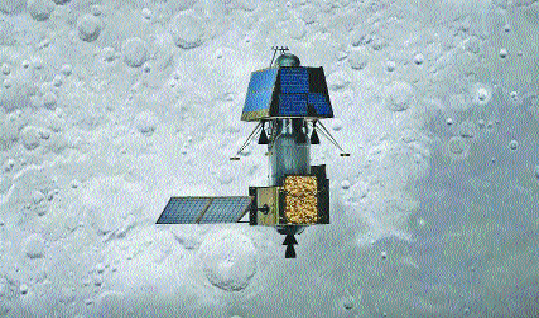Chandrayaan-2 orbiter payloads made major findings, reveals ISRO
| Date :11-Sep-2021 |

THE observations of the Chandrayaan-2 orbiter payloads have yielded discovery-class findings, according to the Indian Space Research Organisation (ISRO). There were eight scientific payloads hosted on the orbiter craft.
They are: Chandrayaan-2 Large Area Soft X-ray Spectrometer (CLASS), Solar X-ray Monitor (XSM), CHandra’s Atmospheric Compositional Explorer 2 (CHACE 2), Dual Frequency Synthetic Aperture Radar (DFSAR), Imaging Infra-Red Spectrometer (IIRS), Terrain Mapping Camera (TMC 2), Orbiter High Resolution Camera (OHRC), and Dual Frequency Radio Science (DFRS) experiment.
Earlier this week, ISRO opened up its scientific discussions on Lunar Science to “the people of the country, to engage the Indian academia, institutes, students, and people from all disciplines and walks of life”, in the form of a two-day ‘Lunar Science Workshop & Release of Chandrayaan-2 Data’.
The workshop commemorated the completion of two years of the Chandrayaan-2 orbiter in the lunar orbit. The events were conducted in virtual mode.
ISRO Chairman and Secretary in the Department of Space (DoS) K Sivan inaugurated the workshop and released the documents on Chandrayaan-2 science results and data products for utilisation by the scientific community.
“The lunar workshop delivered the big news of bunch of discovery-class of findings by Chandrayaan-2”, the Bengaluru headquartered India’s national space agency said.
The mass spectrometer CHACE-2, in its pursuit to conduct first-ever in-situ study of the composition of the lunar neutral exosphere from a polar orbital platform, detected and studied the variability of the Argon-40 at the middle and higher latitudes of the Moon, depicting the radiogenic activities in the mid and higher latitudes of the Lunar interior, it said.
The discovery of Chromium and Manganese on the lunar surface, which are available in trace quantities, by the CLASS payload was announced.
The observations of microflares of the Sun, during the quiet-Sun period, which provide important clues on the coronal heating problem of the Sun, were made by the XSM payload. The first-ever unambiguous detection of the hydration features of the Moon was achieved by Chandrayaan-2 with its infra-red spectrometer payload IIRS, which captured clear signatures of Hydroxyl and water-ice on the lunar surface, ISRO said.
The DFSAR instrument could study the subsurface features of the Moon, detected signatures of the sub-surface water-ice, and achieved high resolution mapping of the lunar morphological features in the polar regions, it was stated.